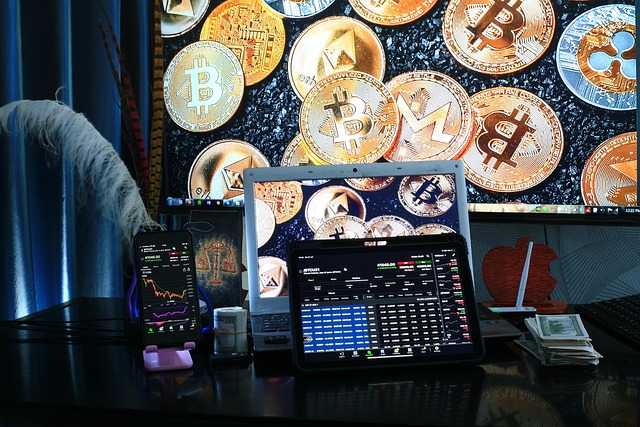Crypto’s debanking problem persists despite new regulations
The crypto industry’s inability to access banking services still concerns many industry observers despite recent policy victories.In past years, financial services firms and banks concerned about fiduciary risk, reporting liabilities and reputational risk often would refuse to offer service to crypto firms — i.e., “debanking” them. Legislative efforts in the United States and Australia are attempting to remove these barriers for the crypto industry. In the former, legislators repealed guidelines that made it difficult for banks to custody crypto assets, as well as those stating that crypto carried “reputational risk” for banks. In the latter, the Labor Party has introduced a bill to create a legal framework for crypto, giving banks the clarity they need to interact with the crypto industry.Despite these tangible efforts, some crypto industry observers say that the crypto’s debanking problem is far from over. US crypto execs say debanking is still an issue The crypto industry has long decried “Operation Chokepoint 2.0,” its nickname for a suite of policies that they claim constrained the crypto industry from growing under the administration of former President Joe Biden. Among these were measures making it more difficult for crypto firms to access banking services. The early days of the second administration of President Donald Trump have seen many of these repealed or changed. One of the first was the repeal of Staff Accounting Bulletin 121, which required banks offering custody for customers’ cryptocurrencies to list them as liabilities on their balance sheets — this made it very difficult for banks to justify offering such services. The administration also appointed a new head of the Office of the Comptroller of the Currency (OCC), Rodney Hood. Dennis Porter, CEO of the Bitcoin-focused policy organization Satoshi Action, told Cointelegraph that under Hood’s tenure, the OCC has already said banks can offer crypto-related services like custody, stablecoin reserves and blockchain participation.Related: Atkins becomes next SEC chair: What’s next for the crypto industry“This opens the door for broader adoption of digital asset technology and custodial services by traditional financial institutions, signaling a major shift in how banks engage with crypto,” he said.Despite these victories, Caitlin Long, founder and CEO of Custodia Bank, said on March 21 that debanking is likely to remain a problem for crypto firms into 2026. Long said the non-partisan board of governors of the Federal Reserve is “still controlled by Democrats,” alluding to Democrats’ more skeptical stance on crypto. Long claimed that “there are two crypto-friendly banks under examination by the Fed right now, and an army of examiners was sent into these banks, including the examiners from Washington, a literal army just smothering the banks.”Long noted that Trump won’t be able to appoint a new Fed governor until January, meaning that, while other agencies may be more crypto-friendly, there are still roadblocks. Australia’s Labor Party to create crypto frameworkStand With Crypto, the “grassroots” crypto advocacy organization started by Coinbase that has spread to the US, UK, Canada and Australia, said that “in Australia, debanking is quietly shutting out innovators and entrepreneurs — particularly in the crypto and blockchain space.”In a post on X, the organization claimed that debanking results in “reputational damage, loss of revenue, increased operational costs, and inability to launch or sustain services.” It also claimed that it forces some companies to move offshore. In response to these concerns, the ruling center-left Labor Party in Australia has proposed a new set of laws for the cryptocurrency industry. The changes to current financial services law seek to tackle the issue of debanking in the country’s cryptocurrency industry.Australia’s Treasury says its new crypto regulations have four priorities. Source: Australian Department of the TreasuryEdward Carroll, head of global markets and corporate finance at MHC Digital Group — an Australian crypto platform — told Cointelegraph that in Australia, debanking decisions were “not the result of regulatory directives.”“Rather, they appear to stem from a more general sense of risk aversion due to the current lack of a clear regulatory framework.”Related: US gov’t actions give clue about upcoming crypto regulationCarroll was optimistic about the Labor Party’s proactive stance. The major political parties were “showing a shift in sentiment and a shared commitment to establishing formal crypto regulation.” “We are hopeful that this will give banks the confidence to reengage with crypto businesses that meet compliance standards,” he said.Canada unlikely to relieve crypto firmsIn Canada, “debanking remains a serious and ongoing challenge for the Canadian crypto industry,” according to Morva Rohani, executive director of the Canadian Web3 Council.“While some firms have successfully established relationships with banking partners, many continue to face account closures or denials with little explanation or recourse,” she told Cointelegraph. While debanking actions aren’t explicit, financial institutions’ interpretation of Anti-Money Laundering and Know Your Customer regulations “creates a risk-averse environment where banks weigh compliance and reputational concerns against the relatively low revenue potential of crypto clients.”The end result, per Rohani, is a systemic debanking problem for the digital assets industry.But unlike in the US and Australia, the Canadian crypto industry may not find relief anytime soon. Prime Minister Mark Carney, whose more crypto-skeptic Liberal Party is surging in the polls ahead of the April 28 snap elections, is himself a crypto-skeptic.Polls show Carney firmly in the lead. Source: IpsosCarney has stated that the future of money lies more in a “central bank stablecoin,” otherwise referred to as a central bank digital currency.Rohani said that “no comprehensive legislative solution has been implemented” as regards to debanking. “A more structured approach, including mandated disclosure of reasons for account termination and regulatory oversight, is needed,” she said.Critics claim crypto is “hijacking” the debanking issueThere is another side to the debanking debate, which claims that crypto’s debanking “problem” is a non-issue or a vehicle for crypto firms to get what they want in terms of regulation. Molly White, the author of Web3 Is Going Just Great and the “Citation Needed” newsletter, has noted that, in the US at least, crypto firms have claimed to be victims of debanking while lauding Trump’s efforts to end protections for debanking at the same time.In a Feb. 14 post, White stated that the crypto industry had “hijacked” the discussion around debanking, which contains legitimate concerns regarding access to financial services — particularly regarding discrimination due to race, religious identity or industry affiliation. She claims the crypto industry has used debanking as a means to deflect legitimate regulatory inquiries into crypto companies’ compliance efforts. Further of note is the fact that Coinbase CEO Brian Armstrong has applauded the efforts of the Department of Government Efficiency (DOGE), with Elon Musk at the helm, to dismantle the Consumer Financial Protection Bureau (CFPB). One of the CFPB’s responsibilities is to investigate claims of debanking. But when DOGE instructed the agency to halt all work, Armstrong said it was “100% the right call,” in addition to making dubious claims about the agency’s constitutionality. In the meantimeWhether the industry’s debanking concerns stem from legitimate discrimination or an attempt at regulatory capture, crypto firms are developing solutions in the interim. Porter said that, as an alternative to banking services, “many crypto companies have leaned on stablecoins as a primary tool for managing finances,” while others have worked with “smaller regional banks or specialized trust companies open to digital assets.”Rohani said that this kind of “patchwork of relationships” can increase operational costs and risks and are “not sustainable long-term solutions for growth or to build a competitive, regulated industry.”Porter concluded that the banking workarounds could actually strengthen the industry’s position, stating that they may “continue evolving into fully integrated relationships with traditional financial institutions, further cementing crypto’s place in mainstream finance.”Magazine: UK’s Orwellian AI murder prediction system, will AI take your job? AI Eye
DeFi platform KiloEx offers $750K bounty to hacker
Decentralized exchange (DEX) KiloEx has offered the hacker who exploited $7.5 million in crypto from its platform a 10% white hat bounty. On April 15, KiloEx posted an offer directed to the hacker who stole millions from the DEX. KiloEx said it had worked with law enforcement, cybersecurity agencies and exchanges to uncover information about the hacker’s activities. The DEX also shared wallet addresses linked to the hackers that the DeFi platform and other organizations are actively monitoring. KiloEx said they were prepared to freeze the stolen funds. However, the DEX offered the hacker $750,000 in exchange for returning 90% of the stolen assets. KiloEx said that it would treat the incident as a white hat exploit if the hacker returned the funds.Hacker stole $7.5 million from KiloExOn April 14, cybersecurity companies reported that an exploiter looted the platform through a price oracle vulnerability. A report from PeckShield said that about $3.3 million in Base, $3.1 million opBNB and $1 million BSC tokens were taken. The blockchain security company said that the information used by a smart contract to determine price assets was manipulated, which led to the exploit. In response to the attack, the platform suspended its DEX. The platform also said the exploit had been contained. Related: Ethical hacker intercepts $2.6M in Morpho Labs exploitKiloEx to pursue legal action if the hacker doesn’t return the fundsThe DEX added that it would drop the matter and publicly acknowledge that the incident is settled if the hacker agrees to return the funds. KiloEx wrote: “We will tweet about this resolution, acknowledging your cooperation and closing the case without further action.”The DEX informed the hacker to contact its email or send an onchain message if they accepted the offer. If the hacker doesn’t accept the offer, the DEX said it would escalate the matter with the relevant law enforcement and pursue the investigation with its cybersecurity partners. “Your identity and activities will be exposed to relevant authorities. We will pursue legal action relentlessly. The choice is yours. Act now to avoid irreversible consequences,” KiloEx wrote. Magazine: Illegal arcade disguised as … a fake Bitcoin mine? Soldier scams in China: Asia Express
Pump.Fun’s PumpSwap DEX processed $2.5B of trades last week, up 40%
Market data shows PumpSwap, the decentralized exchange of memecoin launch platform Pump.Fun, processed $2.5 billion of trades last week.DefiLlama data shows that in the week of April 6, PumpSwap saw a trading volume increase of nearly 40% over the previous week starting on March 30, with its trading volume of $1.8 billion. Since its launch in late March, the decentralized exchange (DEX) has processed $98.4 million of trades.The news follows Pump.Fun launching PumpSwap on March 19, as a dedicated “frictionless environment” for trading memecoins. The DEX attracted considerable trading activity, exceeding $1 billion of volume in its first week of activity.Related: Pump.fun memecoins are dying at record rates, less than 1% surviveAccording to Dune data, PumpSwap’s trades reached a new record high daily count of over 6.1 million on April 12, and on April 14 the platform saw over 5.7 million swaps. It also saw its highest daily active wallets, reaching nearly 264,500 — over 163,000 recurring and 101,000 new.PumpSwap daily active wallets. Source: DuneOn April 15, PumpSwap broke its daily volume record, reaching $417.8 million at the time of publication. The previous record was reported on Monday, April 14, when the volume reached $412.7 million.PumpSwap’s trading volume shows a clear uptrend. Source: DefiLlamaRelated: Memecoins, markets and Trump: Cointelegraph’s Q1 editorial roundtableRevenues are growing alongside volumePumpSwap’s income is growing alongside its trading volume, with Dune data showing that daily fees reached a record of over $1.05 million on April 14. That day, $840,000 were liquidity provider fees and $210,000 protocol fees.PumpSwap daily fees. Source: DuneParaSwap features a 0.25% fee, with 0.2% going to liquidity providers and 0.05% to the protocol itself. The total lifetime fees generated by the DEX stand at $14.2 million at the time of publication, out of which $3.56 million were destined for the protocol.Pump.Fun making millionairesThe developers behind the platform are not the only ones who managed to make money on Pump.Fun. Dune data shows that 506 wallets managed to earn over $1 million on the platform, while over 9,000 made over $100,000.Top five 30-day active Pump.Fun wallets. Source: DuneThe most profitable wallet over the past 30 days has realized gains of nearly $40.6 million, the data shows.Magazine: Memecoin degeneracy is funding groundbreaking anti-aging research
Mantra and Terra Luna: Nothing in common but a token crash
The recent collapse of the Mantra (OM) token triggered comparisons to the infamous Terra ecosystem crash in May 2022, with some commentators referring to Mantra as the “next Terra.” Still, many in the community argue that the two projects share nothing in common besides visual similarities in price charts.“While it’s tempting to draw parallels between OM’s recent crash and the Terra Luna collapse, they’re fundamentally very different events,” said Ben Yorke, vice president of ecosystem at the decentralized finance (DeFi) project Woo, in a statement to Cointelegraph.Alexis Sirkia, chairman of the DeFi infrastructure project Yellow Network, agreed. “There are no real similarities apart from the visual of the price dropping,” he said.Visual similarity — different numbersMantra’s OM token dropped 92% on April 13, dropping from over $6 to around $0.52 within hours. According to data from CoinGecko, OM lost $5.4 billion in market capitalization in less than four hours.By contrast, TerraClassicUSD (formerly UST) took five days to lose a similar percentage, shedding $17.2 billion.Mantra’s OM crash in April 2025 versus USTC (formerly UST) crash in May 2022 (seven-day chart). Source: CoinGeckoThe LUNA crash was more gradual than both the OM token and USTC. It started plummeting some time before the UST token depegged on May 9, 2022.Still, the visual resemblance of the price charts has prompted comparisons among observers, despite significant structural differences between the projects.Terra collapse was systemic in contrast to MantraWoo’s Yorke and Yellow Network’s Sirkia agreed that Terra’s collapse was systemic and occurred due to the failure of its algorithmic stablecoin, while Mantra was not proven to be subject to any systemic flaws.“OM appears to be more of a case of mismanagement or negligence,” Yorke said, adding that the Mantra crash involved a “large number of insider-held tokens” moved to exchanges, which sparked cascading liquidations.Source: ZachXBT“The issue wasn’t a structural flaw in the protocol, but rather a breakdown in token handling and trust,” he noted.Related: Mantra CEO says OM token recovery ‘primary concern’ but in early stages“Mantra is not broken. There was no peg to fail. This is a market structure issue, not a protocol failure,” Sirkia stated, stressing that only an event like a smart contract failure could indicate a serious issue in the protocol. He added:“Terra collapsed because of how it was built. Mantra went through a market-driven correction. The team remained transparent throughout. After the drop, OM bounced over 200%, showing real demand and community belief. That kind of recovery never happened with Luna.”Yorke and Sirkia’s Mantra comments mark the second day after the OM crash, with the token slightly recovering to $0.80 by publishing time after a brutal sell-off from above $6 to $0.50 per token on April 13.According to the latest update by Mantra CEO John Mullin, Mantra expects to share a post-mortem report detailing the events leading to the crash of the OM token in the next 24 hours.Magazine: Illegal arcade disguised as … a fake Bitcoin mine? Soldier scams in China: Asia Express
Can you really buy anything with Pi coin? Find out here!
Key takeawaysPi coin finally went live on open mainnet in February 2025, unlocking real-world use cases after years in closed beta.You can spend Pi coin, but mostly within P2P communities and KYC-verified Pi apps — mainstream adoption is still in its early stages.Pi is now tradable on several CEXs, such as OKX, Bitget and MEXC, but Binance still hasn’t listed it despite 2 million+ user voters lobbying for the listing.Merchant adoption is growing slowly, with real goods and services being exchanged for Pi in localized markets and app-based ecosystems.Often described as a crypto for the people, Pi is a decentralized project that runs without the need for GPUs or gas fees. But five years since its closed mainnet launch in 2021, the million-dollar question still hangs in the air: Can you actually buy anything with Pi coin in 2025?Let’s dive into the Pi Network’s real-world usability and answer what every Pi miner and curious crypto observer is wondering: Does Pi coin work in real life, or is it still just theoretical digital dust?What is Pi coin, and what’s driving the attention around it in 2025? Launched in March 2019 by a trio of Stanford Ph.D.s — Nicolas Kokkalis, Chengdiao Fan and Vincent McPhillip — the Pi Network set out to solve one of crypto’s core problems: accessibility. Unlike Bitcoin or Ethereum, which require specialized hardware to mine, Pi coin was designed to be mined directly from a smartphone, without draining battery or data. The idea? Democratize crypto from the palm of your hand.The Pi Network quickly went viral, spreading through invitation-only mining that created a sense of exclusivity and social virality. By 2021, the app had surpassed 20 million engaged users, or “Pioneers,” and by late 2023, that number had reportedly hit 47 million, making it one of the largest pre-mainnet crypto communities in the world.Here’s a quick timeline of key moments:March 2019: The Pi Network launches a beta version of its app on Android and iOS.2020–2021: User growth accelerates through referrals; Pi phases move toward testnet. December 2021: Closed mainnet goes live; Pi transactions remain within the ecosystem. 2022–2024: Over 100 Pi apps are built for testing in the closed economy.February 2025: Pi Network officially launches its open mainnet, enabling blockchain interaction with the outside world. This long-awaited mainnet move opened the doors for Pi (PI) coin to be listed on centralized exchanges (CEXs) and used outside its sandbox — finally bringing the project closer to its goal of becoming a real digital currency for everyday use.From an ambitious student project to one of the most downloaded crypto apps ever, Pi Network’s journey has been anything but ordinary. But now that the tech is live and tradable, the big question is: Can you actually use Pi coin to buy things?Did you know? Over 2 million users voted for Binance to list Pi coin — and yet, Binance has remained completely silent. Despite Pi Network boasting 47 million users and a fully launched mainnet, the world’s biggest exchange hasn’t budged. Why? Some say it’s a lack of decentralization. Others point to the controlled KYC rollout. Either way, it’s a reminder that in crypto, even a viral army can’t force the gatekeepers to open the doors.Where can you buy Pi coin in 2025?Following the launch of Pi Network’s open mainnet in February 2025, Pi coin has become available for trading on several cryptocurrency exchanges. As of April 2025, Pi coin is listed on the following exchanges:OKX: One of the first to list PI, offering trading pairs such as PI/USDT.Bitget: Provides PI trading with liquidity and user-friendly interfaces.MEXC: Another early adopter, supporting PI trading pairs.BitMart: Supports PI trading, though some listings may be IOUs.HTX (formerly Huobi): Has listed PI, though it’s based on IOU listings.Despite community efforts, including over 2 million votes in favor, Binance has not listed Pi coin as of April 2025. Concerns over blockchain compatibility, transparency and regulatory issues have been touted as reasons for the hesitation.Did you know? Many Pi coin listings on exchanges are actually IOUs, which is not the real deal. These “I Owe You” tokens are speculative placeholders that aren’t backed by mainnet Pi, meaning you can’t withdraw or use them within the Pi Network ecosystem. It’s like trading a movie ticket for a film that hasn’t even premiered yet. Always check whether you’re buying the actual PI token or just a promise.What can you actually buy with Pi coin?Here’s where things get real (or not so real). While you might not be buying a Tesla with Pi (yet), the Pi community has been documenting purchases such as:T-shirts, mugs and phone accessoriesFreelance graphic design servicesBasic electronics and gadgetsFood, drinks and small restaurant meals (in localized Pi events)Handmade crafts and collectibles.The catch? Most of these transactions happen via social media groups, Telegram chats or Pi’s own ecosystem apps such as Pi Browser and Pi Chat. These platforms act as informal marketplaces, often relying on trust and reputation rather than formal escrow systems.So, while Pi isn’t quite ready for prime time in major retail environments, it is functioning — in a grassroots, community-driven way. Think of it more as a barter system with crypto flair than a fully integrated payment network. For now, at least.Pi Network merchant list — fact or fiction?If you search “Pi coin accepted stores” on Google, hoping for a list of your favorite retailers, you’ll be disappointed.There is no official Pi Network merchant list that guarantees where Pi is accepted. Instead, adoption is grassroots and highly localized. One group of Pi Pioneers in Indonesia might be able to buy food with Pi, while another in Vietnam uses it for mobile data top-ups. But it’s hard to track, standardize or verify.Merchant adoption is still early — but gaining traction.Now that Pi Network’s open mainnet is live, the conversation is no longer about “if” Pi will integrate with the broader crypto ecosystem — it’s about how fast it can onboard real merchants and use cases.One promising trend is the rise of Know Your Customer (KYC)-verified Pi apps, platforms that require users and businesses to complete identity verification before participating in the Pi economy. This layer of trust helps Pi Network build a more legitimate commercial environment, where merchants feel more confident accepting Pi coin as payment.In the months following the open mainnet launch, Pi Network’s developers and community have focused on scaling real-world integrations, which include:Local businesses in countries such as Nigeria, Vietnam, Indonesia and the Philippines accept Pi for goods and services. Pi Chain Mall and other marketplaces are enabling digital commerce in Pi. Third-party integrations are being tested to connect Pi with decentralized finance (DeFi) protocols, crosschain bridges and non-fungible token (NFT) platforms. Pi Browser and Pi Apps allow decentralized application (DApp) developers to launch new payment-enabled services using mainnet Pi.With over 100 Pi apps already built during the testnet phase — and a global army of KYC-verified users — Pi Network now has the tools to grow a real, scalable economy. Whether that turns into a bustling merchant network or a niche payment layer depends on what the community builds next.With that said, there’s growing interest in onboarding merchants through KYC-verified Pi apps, hinting at a slow but potentially scalable adoption model.Now with the open mainnet live, Pi is also expected to launch integrated DeFi protocols, decentralized exchanges (DEXs) and NFT marketplaces. If these integrations succeed, serious use cases beyond the Pi bubble could be unlocked.Did you know? During PiFest 2025, over 1.8 million users engaged in transactions using Pi coin across 58,000 active merchants worldwide. This event showcased Pi Network’s growing real-world adoption and its potential to facilitate everyday commerce.Is Pi coin ready for real-world payments?Let’s be honest: Pi coin isn’t a Visa killer at the moment. It’s not ready to power global commerce or even compete with Bitcoin in El Salvador. However, it serves as a testbed for what crypto payments might look like when driven by community trust rather than institutional backing.Think of it less like a universal payment tool and more like a local barter system on crypto steroids.If the Pi Network nails its open mainnet rollout and expands merchant onboarding with real compliance and liquidity support, 2025 could mark the moment Pi goes from playful experiment to actual contender.Final verdict: Can you buy stuff with Pi coin?Yes — but with limitations.You can spend Pi coin, but only in select peer-to-peer (P2P) markets, community-driven stores or pilot programs run by Pi Pioneers. Most of it is still happening in closed circuits, with no large-scale merchant integration yet.But is that really a problem?Maybe not. After all, the early days of Bitcoin weren’t much different — experimental, niche and often dismissed.Back then, buying a pizza with Bitcoin (BTC) was groundbreaking. Now, BTC sits in exchange-traded fund (ETF) portfolios and corporate treasuries.Whether Pi Network breaks through or fades into obscurity depends on what happens next: regulatory clarity and whether the network can scale beyond its internal community.Believer or skeptic, one thing’s certain: The real-world test of the Pi Network economy is just getting started — and the world is watching.
Is Bitcoin the new safe haven during trade wars?
Bitcoin joins the safe-haven debate as trade tensions rise For decades, investors fled to gold and US Treasurys during crises, but in today’s digital, decentralized world, Bitcoin is starting to enter the safe-haven conversation. Despite its volatility, Bitcoin (BTC) has shown signs of resilience during global turbulence, including trade wars, prompting a fresh look at its role in preserving value.Let’s rewind a bit to understand where this question comes from. For decades, whenever uncertainty rattled the global economy, be it war, inflation, or sudden political shifts, investors did what they always do — run to the safest hills. Historically, those hills were made of gold or filled with US Treasury bonds. But things are changing. In a world that’s more digital, decentralized, and volatile than ever, people are asking whether Bitcoin might now be part of the conversation as a modern safe-haven asset, especially during disruptive events like trade wars.To get into this, you need to explore what makes an asset a safe haven in the first place, how Bitcoin has behaved during recent trade-related turbulence and whether it has earned its spot alongside more traditional defensive plays.First, the concept of a “safe haven” isn’t about making a profit. It’s about preserving value. In times of crisis, investors want assets that hold up under pressure. Gold has done this for decades. The US dollar, despite being fiat, is often seen as a safe haven due to its global reserve status and the strength of US financial institutions. Treasury bonds are backed by the full faith and credit of the US government. All these assets are supposed to be relatively low in volatility and high in liquidity.Now, here’s the twist: Bitcoin is not low in volatility. It’s notoriously wild. But despite that, you might have seen moments where it behaves like a safe haven. Not always, but sometimes, and that’s interesting.Isn’t it? The 2018-19 trade war vs Bitcoin’s role in times of turmoil During the 2018–19 US-China trade war, Bitcoin surged as traditional markets faltered, hinting at its potential as a hedge in turbulent times. While its “digital gold” narrative gained traction, Bitcoin’s behavior often mirrors that of speculative tech stocks, keeping its safe-haven status an open question.Take the 2018–19 US-China trade war, for example. As tariff threats escalated and tensions between the two economic giants intensified, global markets became increasingly jittery. Tech stocks took a hit. Commodities wavered. Amid all this, something strange happened. Bitcoin quietly surged. From April to July 2019, the price of Bitcoin climbed from about $5,000 to over $12,000. It wasn’t alone. Gold also rallied during that time. However, this was one of the earliest signs that Bitcoin might not be just a risk-on asset but could also serve as a hedge in turbulent times. That period sparked a new narrative: Bitcoin as “digital gold.”The fixed supply of 21 million coins gave it scarcity. Its decentralized nature meant it wasn’t bound to any single government’s policies. And because it lived on a global, censorship-resistant network, it was insulated from the kind of capital controls that often follow during periods of financial stress. These qualities started to resonate with investors looking for alternatives to traditional safe havens.To be fair, Bitcoin hasn’t always stuck to the script. While there are moments where it moves inversely to risk assets, more often than not, it behaves like a speculative tech stock, especially over short time frames. Historically, Bitcoin has had a strong correlation with the Nasdaq. So, while the “digital gold” narrative is growing, it still sits side-by-side with the idea of Bitcoin being a high-beta bet for risk-seeking investors.Did you know? A 2025 study titled Institutional Adoption and Correlation Dynamics: Bitcoin’s Evolving Role in Financial Markets analyzed daily data from 2018 to 2025. The study found that Bitcoin’s correlation with the Nasdaq 100 intensified following key institutional milestones, with peaks reaching 0.87 in 2024. This suggests that Bitcoin has transitioned from an alternative asset toward a more integrated financial instrument. Inside the Trump tariff wars of 2025: Markets rattle, Bitcoin rises In early 2025, Trump’s sweeping tariffs triggered panic across financial markets, with the Nasdaq and S&P suffering historic drops. Within two days, US stock indexes lost trillions, reigniting the debate over Bitcoin’s role as a modern safe haven.Fast forward to April 2025, and the question of whether Bitcoin can serve as a safe haven got tested again. This time, it was in a much more pronounced way. In February 2025, Trump, now in his second term as president, announced a fresh wave of aggressive tariffs aimed at revitalizing American manufacturing. This was the kind of headline that immediately spooks financial markets, especially when major trading partners began whispering about retaliation. By April 2, Trump had declared what he called “Liberation Day,” a sweeping set of tariffs covering nearly all imported goods. It was framed as economic patriotism, but to markets, it spelled chaos.Chaos came quickly. On April 3, the Nasdaq Composite plunged by nearly 6%, losing over 1,000 points in one session. This was a record-setting drop in terms of raw numbers. The S&P 500 didn’t fare much better, falling close to 5%. Investors began to panic about supply chain disruptions, inflationary pressures and a possible global slowdown. Then came April 4, and the panic only deepened. The Nasdaq slid into official bear market territory, and the Dow lost over 2,200 points in a single day. Within 48 hours, America’s major stock indexes had lost trillions in value.Did you know? Barry Bannister, chief equity strategist at Stifel, noted that Bitcoin and the Nasdaq 100 have been driven by speculative fervor fueled by lenient Fed policies. He highlighted that Bitcoin tends to trade in tandem with highly leveraged tech-focused ETFs, indicating a strong correlation between Bitcoin and tech stocks. Bitcoin didn’t soar amid market crash, but It didn’t sink either During the April 2025 market crash, Bitcoin held steady while stocks plunged, surprising many with its resilience. It didn’t surge, but its stability amid chaos hinted at its growing role as a value-preserving asset in turbulent times.So, what did Bitcoin do? Surprisingly, nothing catastrophic, and that was the story. While nearly everything else was tanking during the tariff-fueled sell-off, Bitcoin didn’t crash. That alone turned heads.In a market where even the most established benchmarks were falling apart, Bitcoin’s relative stability stood out to portfolio managers and institutional watchers.Long criticized as too volatile for serious portfolios, Bitcoin quietly weathered the storm better than many traditional assets. This wasn’t a moonshot moment. It was a resilience moment. Value preservation over value multiplication. And that’s what investors look for in a safe haven. Its ability to hold ground while the Nasdaq and S&P plunged gave more weight to the idea that Bitcoin might be evolving into something sturdier.To be clear, Bitcoin hasn’t fully decoupled from risk assets. It still responds to liquidity flows, monetary policy and investor sentiment. But at times like April 2025, it showed something different. It didn’t break. It held! And for a growing number of investors, that’s starting to matter. Bitcoin isn’t the new gold, but it’s not the old BTC either Bitcoin’s growing resilience stems from a maturing market, rising institutional adoption and its appeal as a non-sovereign, portable hedge in times of financial or geopolitical stress. While not yet the ultimate safe haven, it’s clearly moved beyond its speculative roots and is earning a seat at the table.Part of this growing strength is structural. Over the past few years, the Bitcoin market has matured. Institutional adoption has risen. Spot Bitcoin ETFs now live in major markets. Custody solutions are better. And perhaps most importantly, there’s a broader understanding of what Bitcoin represents. Bitcoin is not just a speculative coin anymore. It’s a tool for financial sovereignty, for hedging against fiat depreciation and for stepping outside the boundaries of politicized financial infrastructure.There’s also the fact that Bitcoin is entirely non-sovereign. In a trade war scenario, where fiat currencies can be weaponized, and capital controls are deployed, Bitcoin becomes very attractive to people who want to move money across borders without interference. It’s portable, permissionless and increasingly liquid. These are three attributes of an asset you want in a crisis.Of course, none of this means Bitcoin is now the undisputed king of safe havens. Gold still plays that role for most of the world’s conservative investors. The US dollar is still the default when people want liquidity in a crunch. And Bitcoin’s price swings can still make people nervous. But you are seeing it graduate amid the market chaos. It’s no longer the outsider it once was. Bitcoin in times of crisis, safe haven 2.0? In both 2019 and 2025, Bitcoin showed flashes of safe-haven behavior, proving it can act as a hedge in times of geopolitical stress. While it’s not gold just yet, its unique properties make it an increasingly serious contender in the global financial playbook.During both the 2019 trade tensions and the 2025 tariff escalation, Bitcoin acted more like a hedge than it did in earlier cycles. And that’s noteworthy. Even if Bitcoin doesn’t yet consistently play the safe-haven role, it’s starting to show it can, at least in specific contexts.There’s a bigger question brewing here, too. What does it mean for financial markets if Bitcoin does become a mainstream safe-haven asset? How does that change portfolio construction, risk models or even geopolitical strategy? After all, Bitcoin isn’t gold. It plays by entirely different rules.Bitcoin is programmable. It can be moved across the world instantly. It can be sliced into satoshis and embedded into smart contracts. If it becomes part of the global toolkit for navigating crises, that changes the game. So, is Bitcoin the new safe haven during trade wars? Not quite, at least not in the traditional sense. But it has undoubtedly earned a seat at the table. Bitcoin may not be the asset your grandparents bought to protect themselves in uncertain times, but for a growing number of investors, especially in the digital age, it’s becoming their version of safety. As geopolitical tensions rise and confidence in traditional financial systems erodes, Bitcoin is positioning itself as a potential hedge for the future.
Only 11% of El Salvador’s registered Bitcoin firms operational
Only 20 of the 181 Bitcoin service providers registered with El Salvador’s central bank are operational, with the rest failing to meet the country’s requirements under its Bitcoin Law. Local media outlet El Mundo cited data from the Central Reserve Bank of El Salvador, showing that 11% of the service providers are operational. According to the central bank’s database, the rest of the providers are classified as non-operational. The data showed that at least 22 non-operational providers have failed to meet most of the country’s Bitcoin Law requirements, which mandate that providers implement stringent supervision of their financial systems. Most of El Salvador’s Bitcoin service providers are non-operationalEl Salvador’s Bitcoin Law requires providers to maintain an Anti-Money Laundering (AML) program, keep records that accurately reflect the company’s assets, liabilities and equity and have a tailored cybersecurity program depending on the nature of its services. The data showed that 89% of the registered providers have failed to meet some of these obligations to be classified as operational. Still, a few firms have satisfied the legal criteria, including the state-backed Chivo Wallet and companies including Crypto Trading & Investment and Fintech Américas.Related: Cathie Wood to kick off El Salvador’s AI public education programEl Salvador’s Bitcoin experimentIn 2021, El Salvador became the first country to accept Bitcoin as legal tender along with the US dollar. This move made Bitcoin integral to El Salvador President Nayib Bukele’s economic strategy. However, the Central American country recently signed a deal with the International Monetary Fund (IMF) on a $1.4 billion loan in exchange for rolling back some of its Bitcoin-related efforts. Under the agreement, taxes will be paid in US dollars and public institutions will limit their use of Bitcoin.On March 3, the IMF asked the country to stop its public sector Bitcoin buys. Still, Bukele said the government will continue to purchase Bitcoin, seemingly contradicting its IMF deal.The IMF deal prompted speculation about whether the country would rescind Bitcoin’s status as legal tender. John Dennehy, an El Salvador-based Bitcoin activist and educator, said in an X Space with Cointelegraph that a rollback law changing Bitcoin’s legal status is set to take effect on April 30.Magazine: Memecoin degeneracy is funding groundbreaking anti-aging research
XRP price analysts project $10 next, ‘optimistic’ target of $20
XRP (XRP) price is up 15% over the past seven from a low of $1.61. According to several technical analysts, a sustained recovery daily close above $2.20 will signal a strong trend reversal that could put double digits within reach. XRP/USD daily chart. Source: Cointelegraph/TradingViewXRP price must reclaim $2.20After the cryptocurrency market experienced a relief rally due to US President Donald Trump’s announcement of tariff exemptions for a range of tech products, traders remain optimistic about the possibility of XRP price breaking into double digits.Popular analyst DOM said that XRP’s recent retest of the support at $1.96 saw it regain a key “value area” above $2.00, established in December 2024. “$2.20 is now the only objective here,” the analyst said in an April 13 post on X, adding that a decisive move above this level would lead to a rise toward $2.50.An accompanying chart shows that the price has also reclaimed the election VWAP (Volume Weighted Average Price) at $2.03, suggesting a potential for further gains.“If $2.00 and election VWAP stay as support, this chart looks very constructive.”XRP/USD chart. Source: DomXRP’s immediate support at $2.10, also the 100-day exponential moving average (EMA), is especially important, according to the liquidation heatmap.A wall of bid liquidity is building around this level, suggesting that a retest of support and a liquidity grab here is becoming increasingly likely in the short term.XRP liquidation heatmap. Source: CoinGlassWill XRP price hit $20 in 2025?Following the recent recovery in XRP price, Maelius, an anonymous crypto analyst, said that the altcoin could reach $10 and an “optimistic” target of between $15 and $20, according to the Elliott Wave Theory on the weekly time frame chart.“Conservative case assumes XRP has completed its W3, currently in the process of finalizing W4, before expanding to a final W5.”He adds that the price action and RSI are mirroring the 2017 cycle, with the RSI topping out in the resistance area (in red), suggesting overbought conditions. If the current cycle repeats, Maelius predicts XRP could reach a W5 target of around $10 toward the end of the year. “Conservative assumption is for a magnitude of W5 to replicate the one of W3, thus targeting $10.”XRP/USD weekly chart. Source: MaeliusContinuing, the analyst argued that there is a possibility that the W3 top is not in just yet.Related: Price analysis 4/14: SPX, DXY, BTC, ETH, XRP, BNB, SOL, DOGE, ADA, LEOThe reason given is a larger accumulation period compared to the 2017 cycle in terms of both price and the RSI.“Therefore, there is a possibility we have just completed W3 out of larger W3, meaning it is just taking a bit more time than previously,” Maelius explained. If it is taking longer this time, Maelius expects the RSI to retest the resistance to confirm the completion of the third wave. Also, the Eliott Wave count would be in line with the previous cycle, with a longer fourth wave within the third wave as before.“In such a case, the final W5 top could easily get prolonged to Q1-2 of 2026, with higher targets than in the conservative case, i.e. likely in the range of $15-$20 or even higher. ” XRP/USD weekly chart. Source: MaeliusMeanwhile, fellow analyst XForceGlobal also noted that XRP is still in a “major bull market,” with its price action standing out dramatically from the rest of the crypto market from an Elliott Wave Theory perspective.“If we have all the ideas aligned together with even the simple technical analysis, there is a very good chance that we’re are gonna be working for all-time highs at the very minimum expectation.” XRP/USD daily chart. Source: XForceGlobalAs reported by Cointelegraph, XRP’s symmetrical triangle pattern suggests a possible rally to new all-time highs over $3.50. This article does not contain investment advice or recommendations. Every investment and trading move involves risk, and readers should conduct their own research when making a decision.








